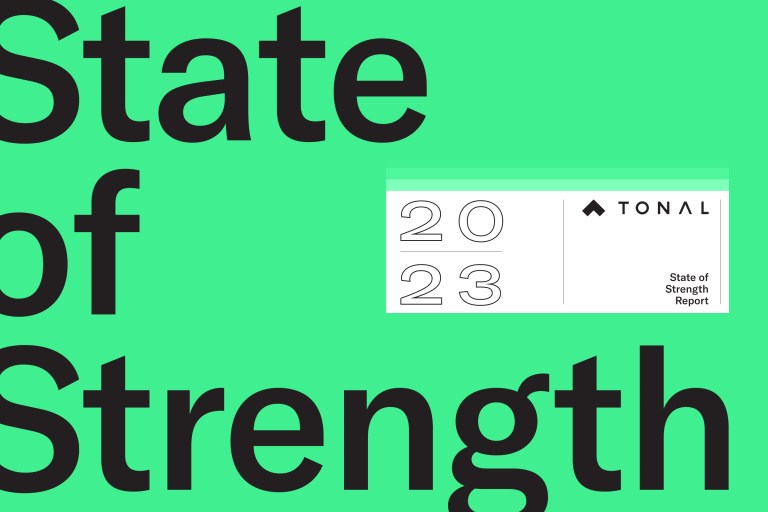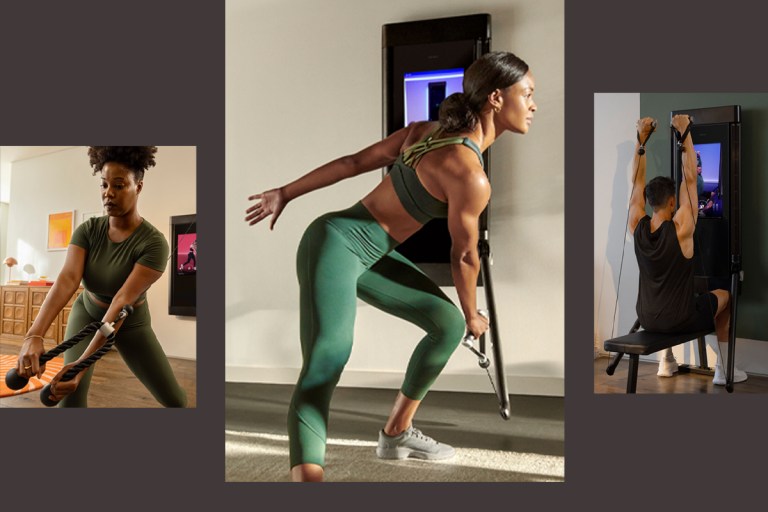4 Predictions for the Future of Fitness
Tonal’s coaches and experts predict what’s coming around the corner in the State of Strength report.
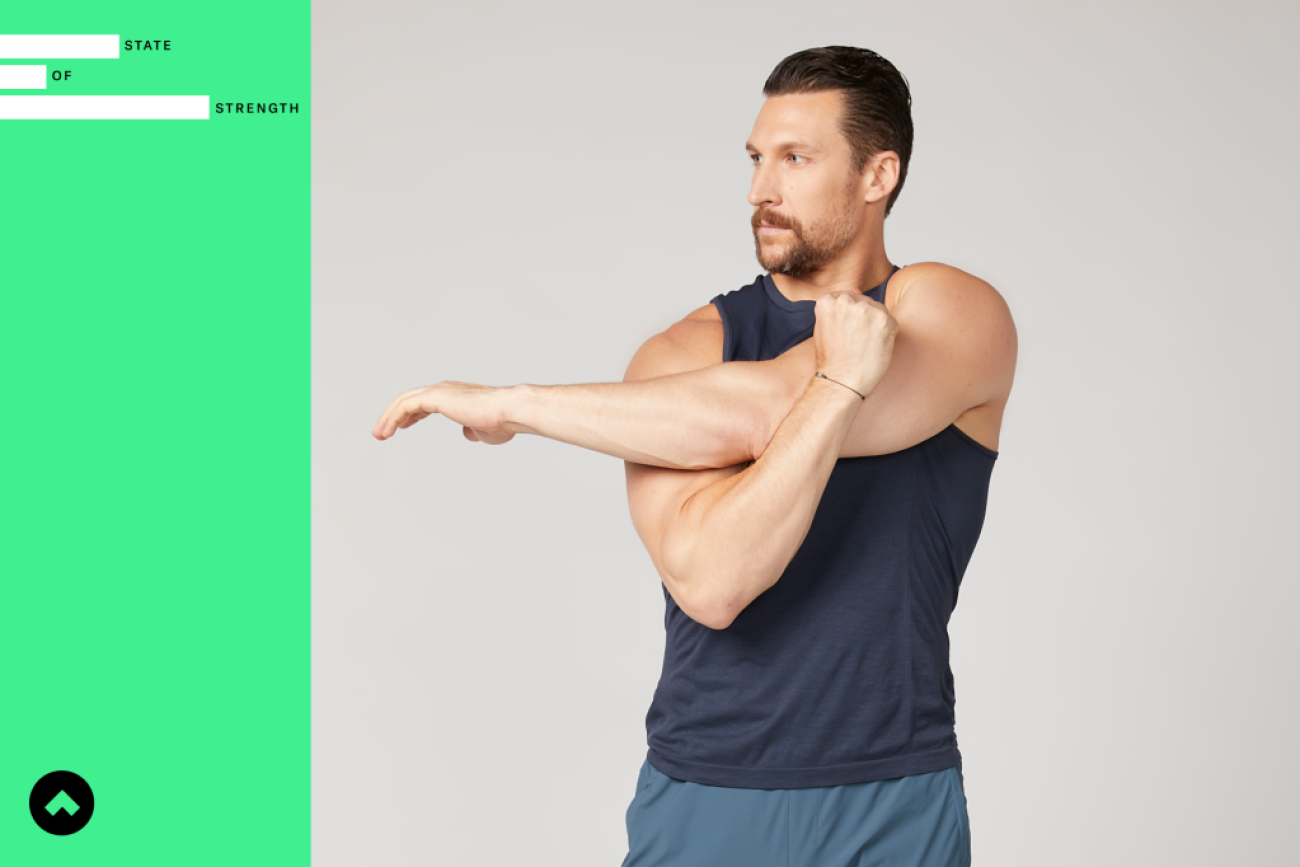
As an industry, fitness is constantly evolving with new trends, new players, and new methods promising to help you achieve your goals. In this sea of fads, strength training, with its range of science-backed benefits from improved mental health to reduced all-cause mortality, has stood the test of time.
This is evident in Tonal’s 2023 State of Strength report, a sweeping, observational study of the fitness habits of more than 175,000 unique members over one year. In this analysis of the world’s largest data set on strength training, it’s clear that more and more people, including women and older adults, are embracing lifting heavy and seeing results.
But just as scientific research is always expanding as new theories are tested, it’s likely that strength training in the future may look different than it does now. As part of the State of Strength report, Tonal’s fitness experts and world-class coaches shared their predictions for what’s next in the world of strength training. Here are the changes they see coming in 2024 and beyond:
1. Body Composition Over Weight Loss
GLP-1 agonist drugs (such as Ozempic) offer a quick path to weight loss—but these medicines aren’t a shortcut to fitness and the long-term side effects are largely unknown. Unless paired with adequate protein intake and resistance training, rapid weight loss may also result in the loss of muscle mass. In one study, lean muscle mass accounted for around 39 percent of total weight loss among participants. This may be detrimental as lower levels of strength are associated with higher all-cause mortality.
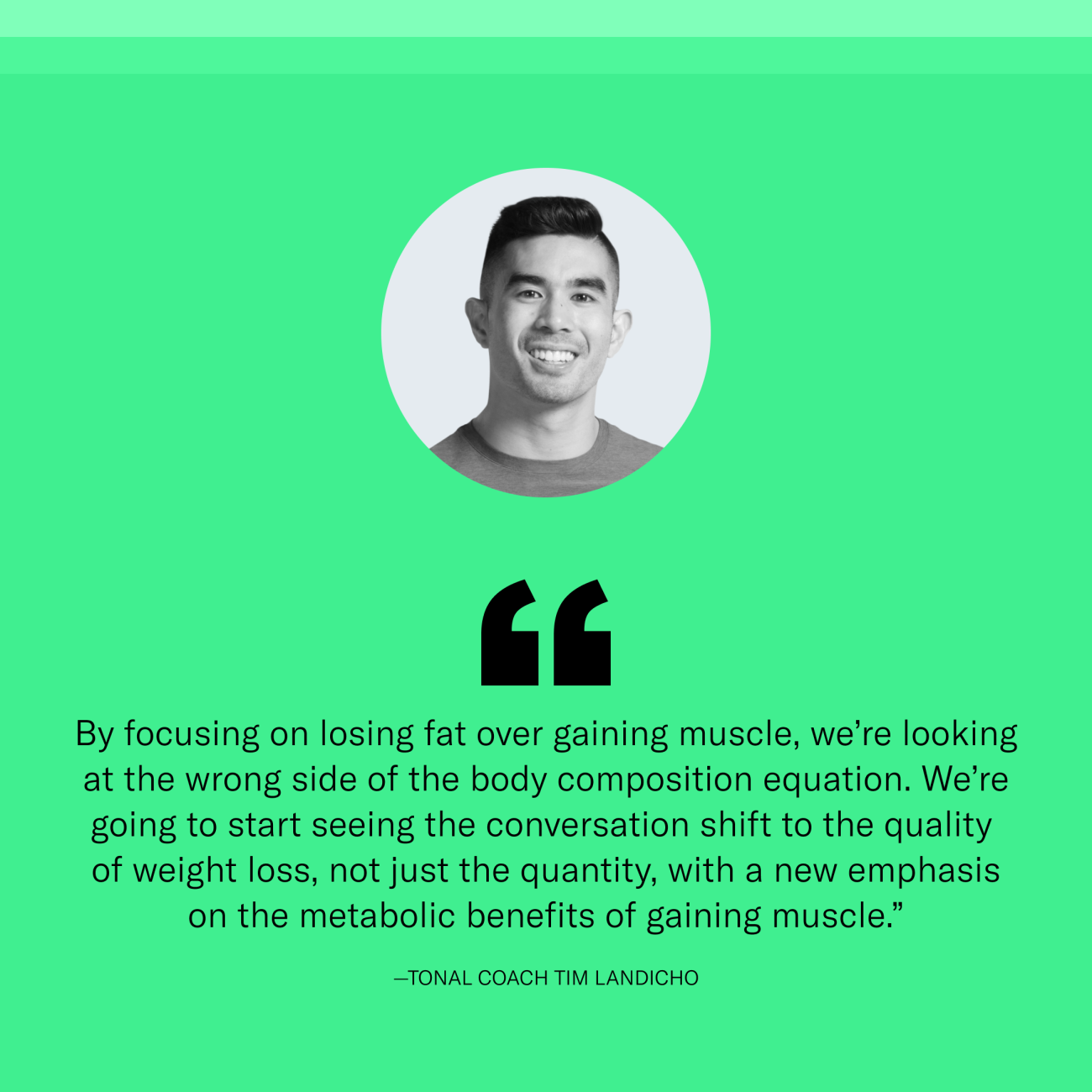
Weight loss drugs won’t replace exercise, but rather, they will highlight the importance of a resistance training routine when it comes to functional fitness, athletic performance, and mental health benefits. Troy Taylor, Senior Director of Performance at Tonal, predicts that combining resistance training with these drugs will be critical to patients’ long-term success as it may help them avoid the adverse outcomes linked to muscle loss.
“By focusing on losing fat over gaining muscle, we’re looking at the wrong side of the body composition equation. We’re going to start seeing the conversation shift to the quality of weight loss, not just the quantity, with a new emphasis on the metabolic benefits of gaining muscle,” says Tonal Coach Tim Landicho.
2. Expanded Hybrid Training
Strength training isn’t a hard sell anymore. It’s common knowledge in the fitness industry that resistance training is essential for all-around health and has the potential to improve body composition even more than cardio. Now, a wider audience is catching on. Hybrid athletes aren’t ditching running, yoga, or cycling—they’re adding strength to their routines to get the most out of all their activities. That’s why gyms, boutique fitness studios, and trainers are also incorporating strength training into popular workouts.

In a survey of Tonal members, 38 percent reported using another form of at-home connected fitness while 35 percent said they also participated in an outdoor activity such as running, walking, cycling, or hiking.
“People value diversity and variety in their regimen and activities like running and cycling are entry points to strength training for many. The hybrid athlete sees the value that resistance training, whether it’s at home or in a gym, adds to their other athletic pursuits,” says Tonal Coach Joe Rodonis.
3. AI Integration
Every day, more and more industries— from education and healthcare to finance and retail—are finding new applications for artificial intelligence and large language models. Fitness is no exception. Regular people now collect and track their data, something that was once a luxury reserved for professional athletes. Artificial intelligence, powered by that data, is developing new capabilities and insights. However, it is limited in its ability to personalize recommendations.

“A coach’s expertise and human touch can help users understand, personalize, and channel those insights into significant results,” explains Josh Shapiro, senior staff data scientist at Tonal. “AI will, in essence, amplify the expertise of coaches out to hundreds of thousands of users at once.”
“While AI won’t replace personal trainers anytime soon, it will serve as a valuable resource for creating programming and freeing up coaches to focus on the human elements of training that can’t be replicated by a machine,” says Tonal Coach Ash Wilking.
4. Science on Social
Toning shoes, shaking weights, and boot camps that push you to give 100 percent, 100 percent of the time: Fitness fads make big promises, each one claiming to be the best method for helping you lose fat or gain strength. But these fads tend to fizzle out just as quickly as they emerge. Typically, this is because they aren’t based on science.
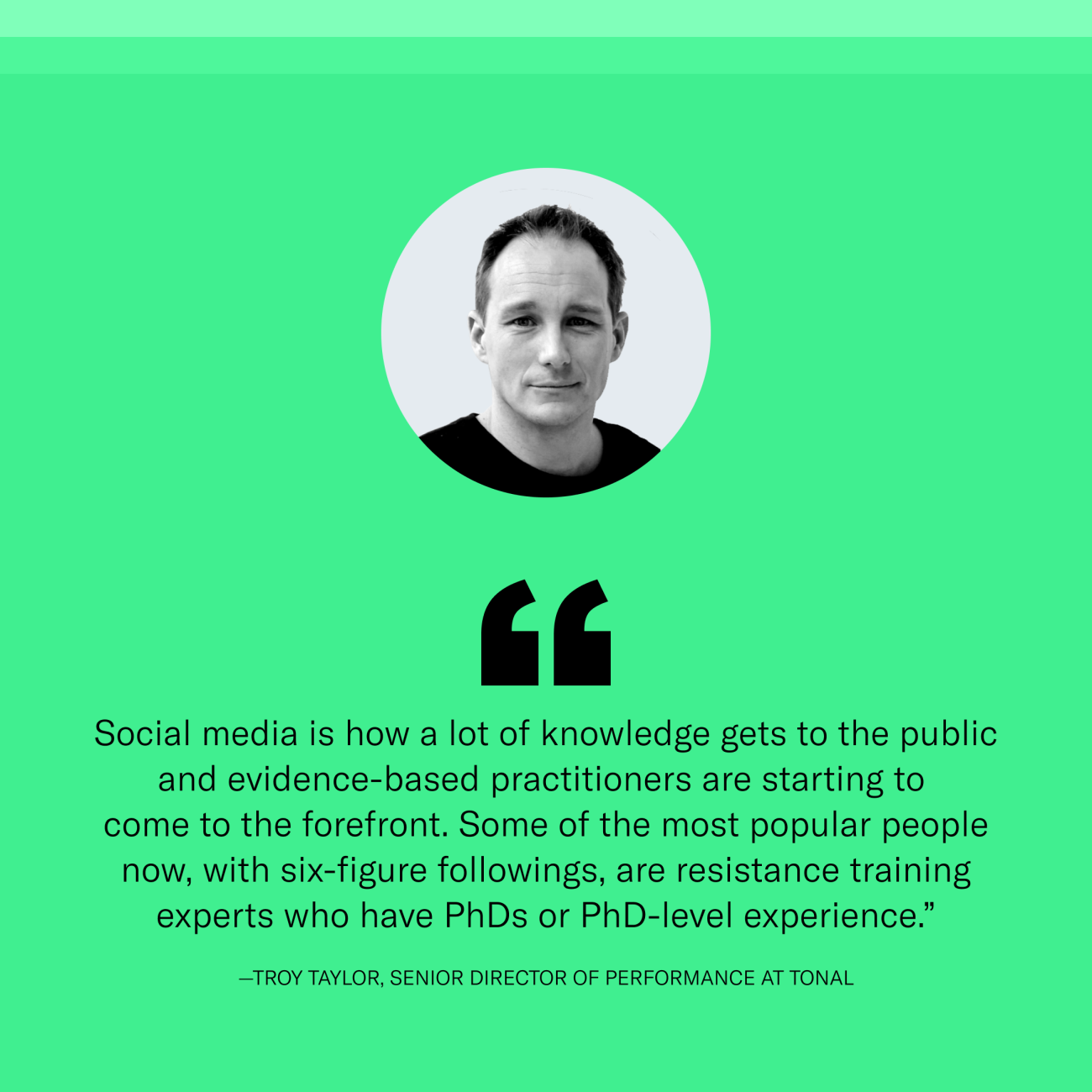
Social media has been a breeding ground for fads because the barrier to entry is so low. Anyone can become an influencer, even if they lack any credentials, education, or training. As people become disillusioned with uncredentialed influencers, misleading filters, and AI-generated images that promise unrealistic results, they’re demanding higher standards for content.
“Social media is how a lot of knowledge gets to the public and, fortunately, evidence-based practitioners are starting to come to the forefront. Some of the most popular people now, with six-figure followings, are resistance training experts who have PhDs or PhD-level experience,” says Taylor
